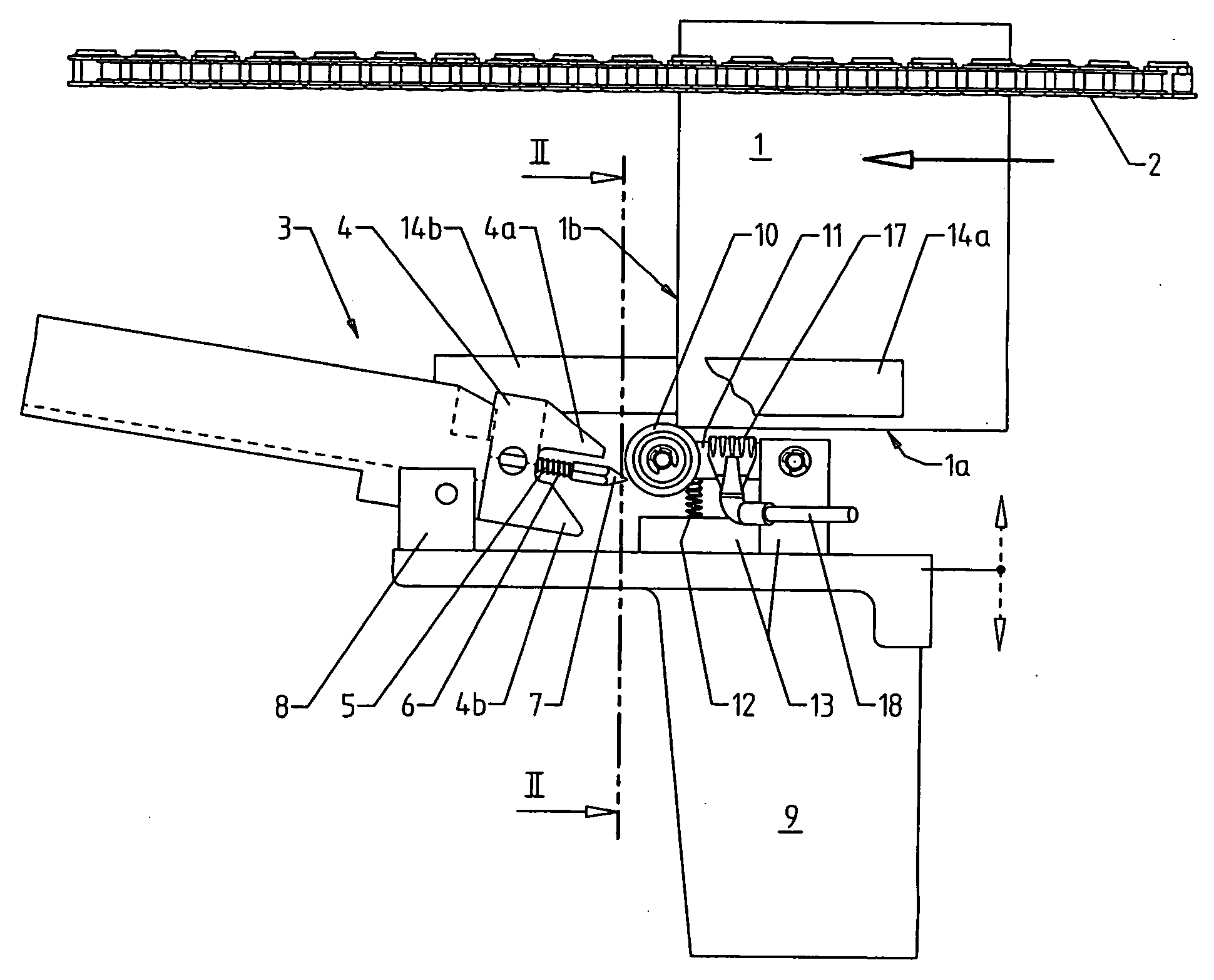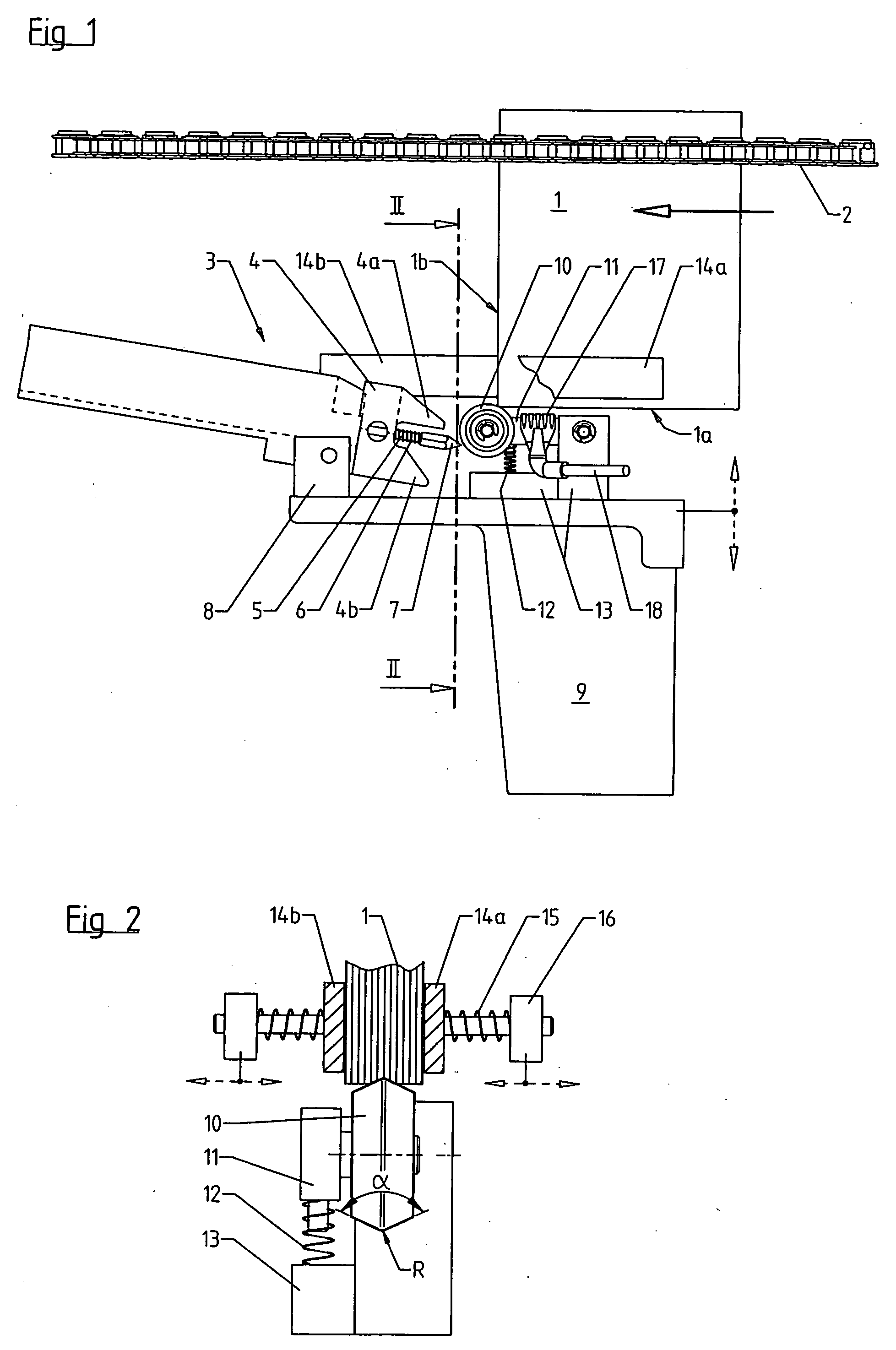Device for splitting book blocks in bookbinding machines
a technology for bookbinding machines and book blocks, applied in the direction of pile separation, article feeders, printing, etc., can solve the problems of laminated materials being damaged, the edges of cardboard sheets or panels are split apart,
- Summary
- Abstract
- Description
- Claims
- Application Information
AI Technical Summary
Benefits of technology
Problems solved by technology
Method used
Image
Examples
Embodiment Construction
[0010] Book blocks 1 are transported by a conveyor 2 with their spine pointing upward, and pushed against a splitting element 3 in the direction indicated by the arrow in a cyclic fashion such that they are centrally split apart and can be subsequently transferred astraddle to transport plates of a casing-in machine, in which the respective book blocks are joined with a case. A separate splitting tool 4 is arranged upstream of the splitting element 3 on a shaft 5 of the splitting element 3 and comprises an integral bottom splitter 4a for opening the book blocks 1 on the book block edge and an integral pointed splitter 4b for opening the book blocks 1 on the head edge cut or the foot edge cut 1b (depending on conveying orientation). The bottom splitter 4a and the pointed splitter 4b are arranged on the splitting tool 4 diametrically opposite of one another and can be selectively moved into their respective operative position by turning the splitting tool 4 about the longitudinal axis...
PUM
 Login to View More
Login to View More Abstract
Description
Claims
Application Information
 Login to View More
Login to View More - R&D
- Intellectual Property
- Life Sciences
- Materials
- Tech Scout
- Unparalleled Data Quality
- Higher Quality Content
- 60% Fewer Hallucinations
Browse by: Latest US Patents, China's latest patents, Technical Efficacy Thesaurus, Application Domain, Technology Topic, Popular Technical Reports.
© 2025 PatSnap. All rights reserved.Legal|Privacy policy|Modern Slavery Act Transparency Statement|Sitemap|About US| Contact US: help@patsnap.com


